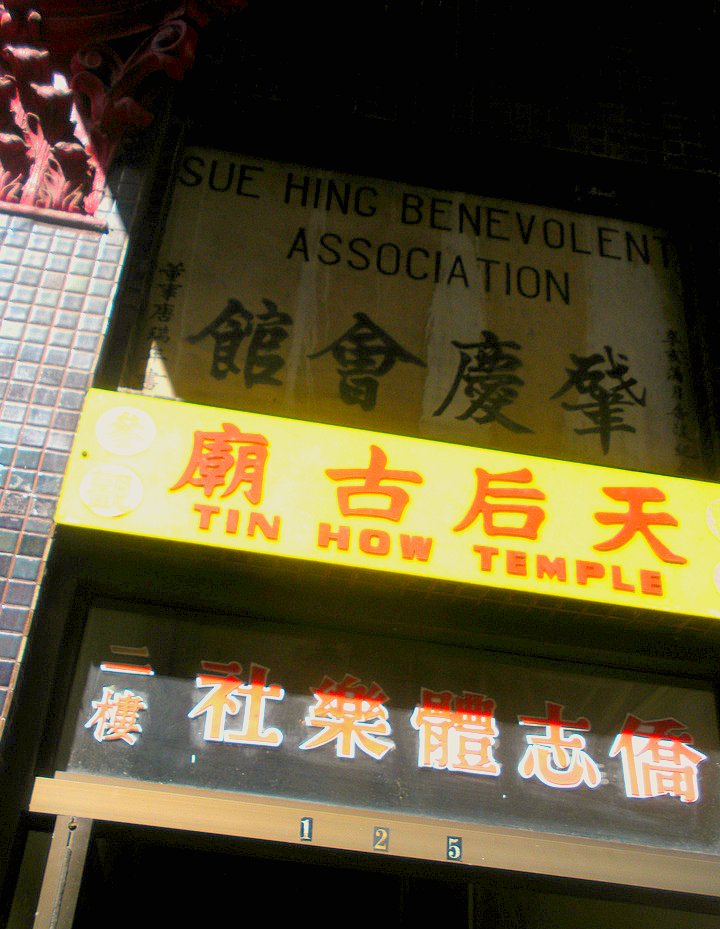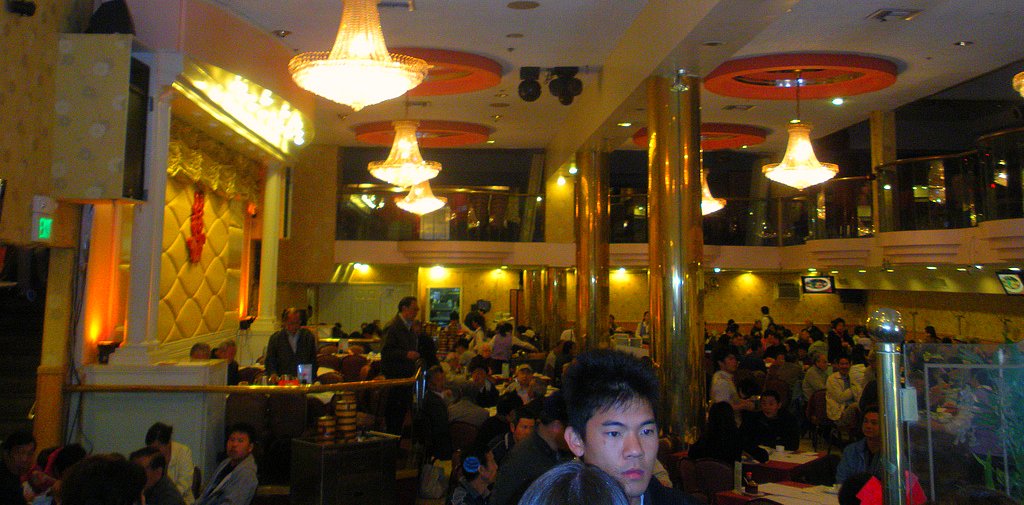I'd been to Chinatown in the past, but mainly to the main tourist drag: through the Dragon Gate leading from Union Square area to Grant Avenue, which is lined with an endless array of souvenir shops. But I knew there was much more to this historic neighborhood than just cheap Buddha statues and paper fans and dragon-motived knick knacks.
A bit of online reading gave me a good sense of the history of this neighborhood. Chinatown actually started out as a ghetto for Chinese immigrants in San Francisco, when they began arriving in the 1850s in waves to work as cheap labor on the railroads or Gold Rush miners.
Americans soon began feeling hostile toward their new neighbors because they worked so hard for so little money and were coming in such an influx that jobs were at a shortage. Government began to enforce this discrimination with legislation such as the Chinese Exclusion Act of 1882.
Despite these restrictions, Chinatown continued to flourish as a hub for Chinese immigrants, with schools, churches and shops owned by Chinese people.

Nowadays Chinatown is somewhat touristy and Disneyland-ified (given an exaggerated theme to draw more visitors), but it is not all a facade. Between the crowded sidewalks full of Chinese shoppers stocking up on fresh groceries and store owners tending to their small shops and markets, peppered with lively conversations in Cantonese, I actually feel like I've stepped into another country when I walk around there.
When I went with my ESF class, we stopped at the Tin How Temple, a dim sum restaurant called New Asia Chinese Restaurant, and finally to the Golden Gate Fortune Cookies factory.

The Tin How Temple is the first Chinese Temple in the United States. Walking inside, up about four flights of narrow stairs and finally into a tiny room, it was a wonder that anyone could ever find this place. The room inside was filled with the fragrant smoke of incense and stung my eyes. A group of elderly Chinese women seemed to be running everything here. One very kind woman showed our class many aspects of the temple unfamiliar to us and taught us how to ask for a fortune. Turns out you don't just crack open a cookie. I enjoyed learning about the rituals observed in the temple, which were new to me.
Next was brunch. I was starving by this point! We crawled out from the dreamlike haze of the temple into the bright daylight, ready for dim sum. We were walking through streets I had never been on before and I began to understand that Chinatown is for more than the tourist trap I previously thought it was. Many Chinese-Americans perused the streets, doing their everyday grocery shopping or meeting for a meal. Most of them seemed to be meeting at New Asia like we were -- it was absolutely packed inside. It's always a good sign to see locals dining at the establishment you choose, which seemed to be the case.

The restaurant was a huge open room full of many round tables, each surrounded by many chairs, all of which were filled with hungry patrons. Weaving between the tables were waiters wheeling carts of small dishes meant to be shared by the groups.
Finally seated, food was instantly presented to us by some rather pushy servers. They would usually hold a dish out to us, expecting an instant reply of "yes" or "no." They had little patience for questions or hesitation. We seemed to be choosing randomly. I had no knowledge of popular dim sum dishes prior to this, but it seems we tried most of the ones other tables had, and a few others.
Over all I felt pretty overwhelmed by the dim sum experience. It was a bit stressful trying to be mindful of servers shoving food at you constantly and trying to decide if you wanted it or not. Being a somewhat picky eater, a lot of the dishes looked off-putting to me. I tried most and was often pleasantly surprised that I liked them. However, others I would rather not have tried. What I did enjoy most about the dim sum meal is that it was very interactive and made us focus on our food, discussing what we liked and what we should order next as a group.


We walked off our meal as we strolled over to the Golden Gate Fortune Cookie factory. Like the temple, it was tiny, located in an alleyway with a barely noticeable storefront. Inside we got to see fortune cookies being made, from flat discs made by a small machine and then folded in half with a fortune inside by hand. This process was mesmerizing to watch.
I was happy to have spent this day with ESF in Chinatown. It gave me a fresh perspective on the neighborhood that I thought was a mere tourist trap. It also gave me my first taste of dim sum, which I think, with more knowledge and experience under my belt, I will someday enjoy very much.
By the way, in my reading I found this fascinating account from a former chief of police Jesse B. Cook (1860-1938) where he describes Chinatown's sordid beginnings, which included gambling, prostitution, opium dens and gang wars. A fun and interesting read from a white man trying to keep the "Chinamen" under control, with some great old photos.

1 comment:
hey laura! thanks for the comment. i love your post. as always, beautifully written!
Post a Comment